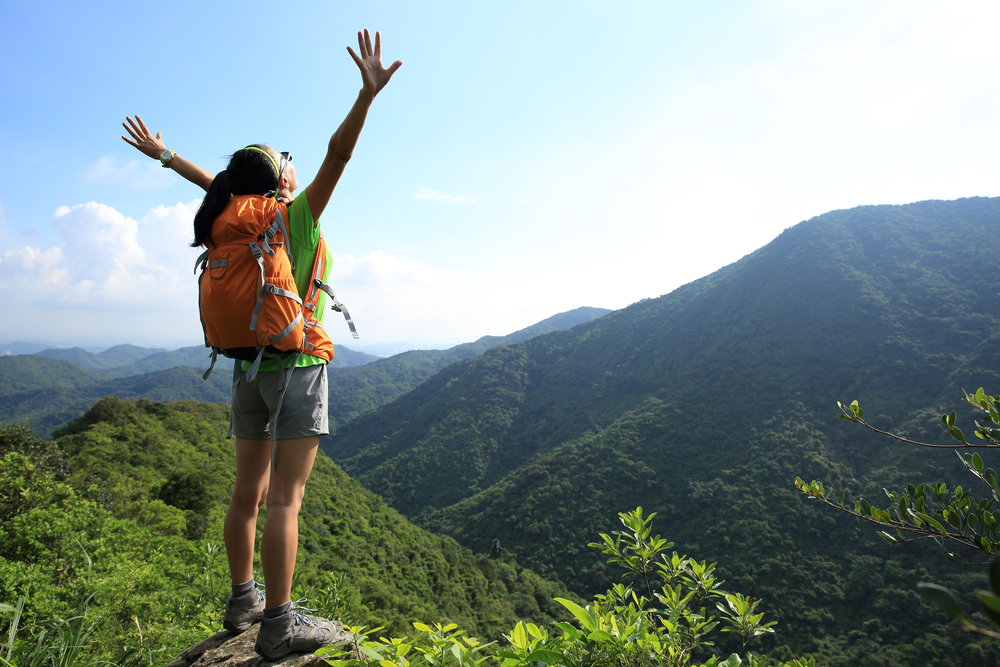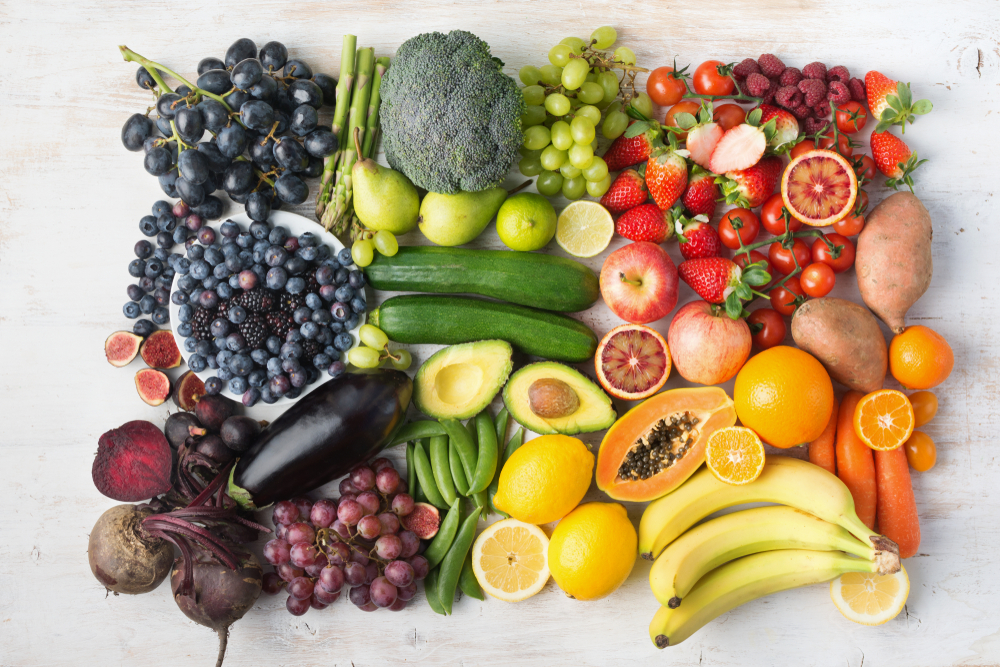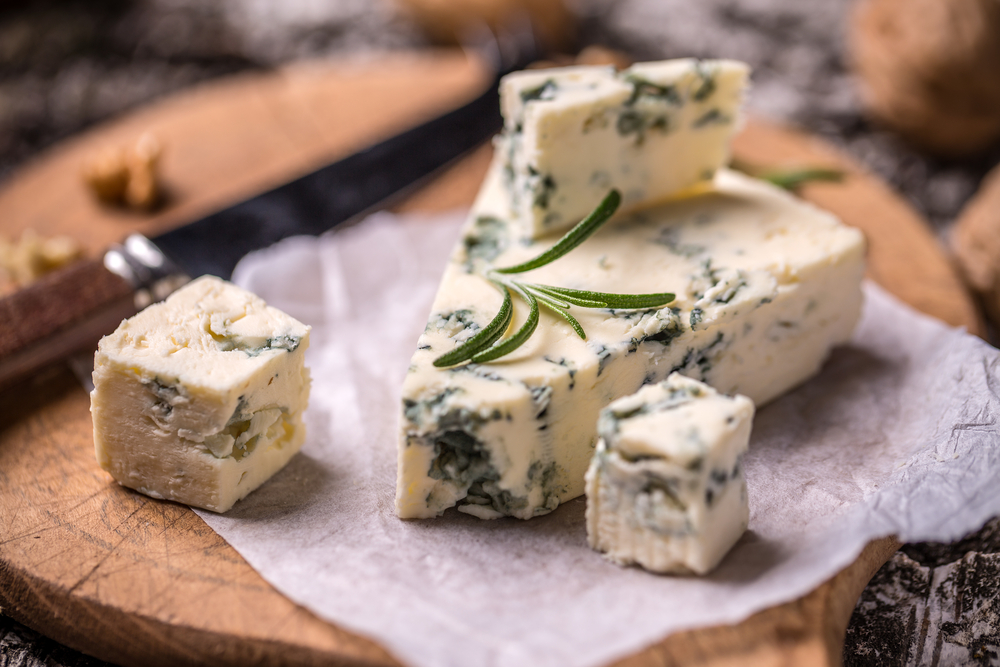
Now the sun has finally shown its face this summer, hopefully we can enjoy a little more good weather. Equally, a new month brings even more nutritious and delicious fruits and vegetables to enjoy in season.
There’s no question that seasonal produce tastes more flavoursome, has a much better texture, and is at its nutritional peak.
Clinical Nutritionist Suzie Sawyer shares her top five fruits and vegetables for August.

Peaches
Whilst not always the easiest fruit to eat on the run, the fact that they’re so juicy is one of their best features. In season, the juice of peaches has an amazingly distinctive and, not surprisingly, fruity taste.
From a nutritional perspective, their gentle orange colour makes them rich in beta carotene, a powerful antioxidant in the body and also great for the immune system. Nature provided them at just the right time of year because beta carotene can help protect the skin from free radical damage from sunlight. Peaches are also rich in vitamin C, another equally powerful antioxidant.

Be wary though of the tinned varieties which are generally high in sugary syrup and the canning process destroys most of the vitamin C. Enjoy them in their natural state eating them over a bowl to catch the juice!
Watercress
Whilst it doesn’t look the same as its other family members, watercress is part of the cruciferous vegetable family which boasts Brussels sprouts and broccoli as some of its super-nutritious relatives.
With its dark green leaves, watercress is probably one of the healthiest salad vegetables, providing plenty of antioxidants. However, as with other members of the family, watercress possesses additional powerful plant compounds that can help fight off some of our nasty degenerative diseases.

In traditional medicine, watercress was used to treat kidney and liver problems. Unknowingly, they were tapping into the nutrients that work on detoxification within the body that watercress provides.
Enjoy its delicious peppery taste in soups, salads, or sandwiches.
Broad beans
Also known as Fava beans, these legumes certainly pack a nutritional punch and are also a stalwart in Mediterranean countries. They’re rich in protein, fibre, beta carotene, vitamin C, potassium, and energising iron.

However, beans are also rich in lignans which have a hormone-balancing effect. They are especially helpful for women going through and post menopause. Why not try them in a broad bean hummus, with feta cheese, in a green salad or add to strong flavoured dishes containing bacon or chorizo?
Aubergines
Another Mediterranean favourite, and generally referred to as eggplant in the US, aubergines are a great nutritional powerhouse. They are the staple ingredient in Greek moussaka and French ratatouille. Their beautiful dark skin ensures they’re loaded with anthocyanins which are antioxidants, and aubergines also provide plenty of fibre, energising folate and are also low in calories. Watch out for aubergines in olive oil, which although heart healthy, does increase the calorie load if you are watching your weight.

For a great summer treat, enjoy aubergines chargrilled with other roasted vegetables or make them into fritters, which are a classic Spanish tapas dish.
Turnips
We tend to think of turnips as a rather old-fashioned vegetable and they may not be at the top of our shopping list. However, they are rich in vitamin C, hormone-balancing vitamin B6 and bone-loving phosphorus, plus fibre. Whilst we tend to think of turnips as a root vegetable to eat in the Autumn, they also have a season during the summer.

One of their biggest claims to fame is that turnips contain indoles, which are plant compounds that specifically support the work of our liver enzymes. With everything that life throws at our overworked livers, any support is very welcomed!
Whilst turnips do have a delicious nutty flavour, they are best enjoyed with some slightly stronger flavours, perhaps roasted with parmesan cheese, or added to curries or stews. Or for more of a summer twist, why not do as the Italians do and add them to a risotto?
Enjoy some summer seasonal sensations this August.
FOR MORE GREAT NUTRITION AND LIFESTYLE ADVICE:
Sign up to receive our blog and get a weekly dose of the latest nutrition, health and wellness advice direct to your inbox.
For everything you need to know about vitamins, minerals and herbs visit our sister site Vitamin Expert – your essential guide to nutrition and natural health.
Follow us on Instagram @feelaliveuk for nutrition, lifestyle and well-being tips.
Visit us at www.feelaliveuk.com for the latest offers and exclusive Alive! content.
Follow and Chat with Suzie on Twitter @nutritionsuzie
All images: Shutterstock














 Clearly, we don’t need to travel to India to eat a traditional Indian curry (although it would be well worth the trip), and to enjoy its amazing health benefits.
Clearly, we don’t need to travel to India to eat a traditional Indian curry (although it would be well worth the trip), and to enjoy its amazing health benefits. Many of curry’s health benefits are down to turmeric, another brightly coloured spice which now has plenty of research to support its nutritional excellence. Turmeric has great anti-inflammatory properties, specifically aiding joint health, but is also beneficial for liver health, digestion, and the immune system. Indeed, few spices can rival its wealth of health benefits. It’s not well absorbed by the body, so is best eaten in a meal with fats (such as a curry) and included in dishes, little and often.
Many of curry’s health benefits are down to turmeric, another brightly coloured spice which now has plenty of research to support its nutritional excellence. Turmeric has great anti-inflammatory properties, specifically aiding joint health, but is also beneficial for liver health, digestion, and the immune system. Indeed, few spices can rival its wealth of health benefits. It’s not well absorbed by the body, so is best eaten in a meal with fats (such as a curry) and included in dishes, little and often.












































 It’s good for the body to feel hungry sometimes too. We have got very used to the availability of food in the developed world and it’s in front of us throughout the day. Once you start to take control of the situation, rather than food controlling you, changes will start to happen.
It’s good for the body to feel hungry sometimes too. We have got very used to the availability of food in the developed world and it’s in front of us throughout the day. Once you start to take control of the situation, rather than food controlling you, changes will start to happen.
